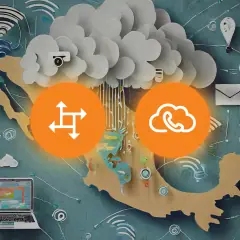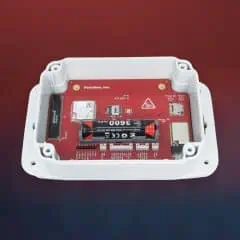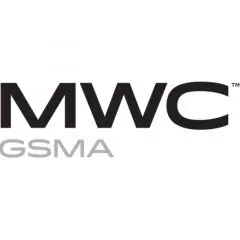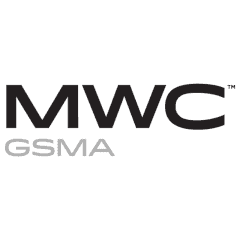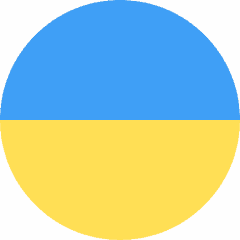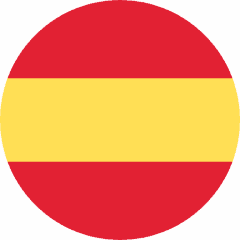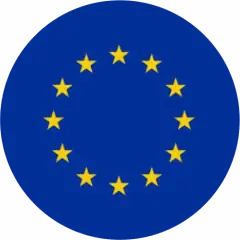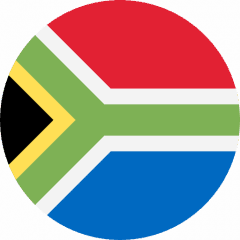PortaOne Add-on Mart introduces new modules (created by Boom) that allow you to bring in additional revenue in two ways:
- By reselling Microsoft Teams and supplying direct routing outside of the Microsoft ecosystem
- And by offering your end users a video conferencing tool that can be a cheaper and more capable alternative to options like Zoom or Skype
On November 19, we held a joint webinar with Boom CEO Nick Birtwistle and CTO Devrin Cakali to demonstrate these features.
As employees across the world continue to work from home, more and more companies are adopting Microsoft Teams for instant messaging and video conferencing. For a CSP, it’s difficult to compete with Microsoft Teams, but you can still leverage its success and make use of its massive subscriber base. How? By becoming a reseller and offering your customers better prices, more flexible calling plans, and additional services such as domestic/international DID numbers. With options like these, they’ll be happy to pay you instead of Microsoft.
Microsoft’s calling plans are expensive and not very convenient for countries outside the USA or the European Union, so we’ve partnered with Boom to bring you a module that allows direct routing outside of the Microsoft ecosystem. With a PortaOne iPaaS subscription and integration with the Boom module, you can offer existing Microsoft Teams users a “phone system” subscription that establishes you as their calling provider and passes all inbound and outbound calls through your PortaSwitch. Plus, you can also create and offer calling plans that are more flexible and useful for your end users (e.g., “300 minutes to Europe” or “World unlimited for $50”).
All your customer needs is a Microsoft 365 subscription (for Microsoft Teams) and a Microsoft Phone System add-on that enables Microsoft Teams to be connected to regular phones.
Here’s how it works: after the Microsoft Phone System add-on is activated, the administrator adds the Boom domain to the company’s Teams environment to send calls to Boom’s cloud server, which is a High Availability SBC Pair hosted in Azure Cloud. When an end user makes a phone call from their Microsoft Teams account, the call is delivered to the SBC, then routed to your PortaSwitch. Next, PortaSwitch routes the call to the outbound carriers of your choice, according to LCR (least-cost routing).
Once you have subscribed to PortaOne iPaaS and the Boom integration module, you will have access to all the necessary infrastructure – that means there are no additional steps for you to take.
The Boom Management Portal lets you automatically provision customers by providing the Microsoft end user with tokens into the management portal. When the tokens are received, the end users will be automatically subscribed to the SBC facilitated by Boom. As a result, they will be able to make and receive calls directly from their Microsoft Teams app, either on their desktop or via mobile soft client versions – with the big difference that their subscriber fees now go to you.
Another new way to bring in additional revenue covered during the webinar is through Boom’s white-label video conferencing service.
This service allows you to provide your end users with an alternative to apps like Zoom for a much cheaper subscription price (just a few dollars per month as compared to fees of $12.49 or more for Zoom). You’ll be able to fully brand the service as your own while offering users all the market-standard features – like multiple video feeds, file transfer, chat, lobby access, moderator controls, video session recording (coming soon), and many more. Meanwhile, you’ll be collecting those subscription fees yourself. With the help of a few add-ons, it’s also possible to offer advanced features like voice recording transcription, keyword search, and analytics.
Users can access this video conferencing service via all major browsers (Chrome, Firefox, Safari, etc.) across PC, Mac, iOS, and Android devices. It uses WebRTC technology (protected by DTLS encryption, which allows users to make secure calls via insecure networks like Wi-Fi at Starbucks, without a need for specialized equipment). Conference guests can join from anywhere in the world via an invite link at no charge, and no software downloads are required. You can also use “per user per month” charging, calculated based on the number of moderator licenses.
Watch the webinar recording to learn how to:
- Increase your income by providing IP Centrex services to customers who subscribe to Microsoft Teams
- Integrate the Microsoft Teams client with PortaSwitch and use all of its call control capability and features
- Allow your end users to make and receive calls via Microsoft Teams through Microsoft Direct Routing and your existing upstream termination/origination partners
- Offer your users a cheaper “per user per month” charging option so they can switch from Microsoft’s complex and expensive calling plans and avoid the additional fees they tack on
- Create and sell as many specialized calling plans and bundles to be used with Microsoft Teams as you like
- Offer your customers a branded alternative to Zoom and other video conferencing tools – and collect the profits
- Enhance the features of your new, brandable video conferencing service with analytics and keyword search of voice recordings

Audience poll results
We asked our webinar audience this question: What’s your current preference for selling video conferencing solutions?
Here’s what they said:
- I’d like to be able to offer my own branded solution – 53.66%
- Resell Microsoft Teams – 39.02%
- Recommend Zoom to my clients – 7.32%
- Recommend another product – 0%
Top Webinar Q&As
Q: Does the Boom SBC provide direct routing for Microsoft Teams?
A: Yes. Boom’s SBC pair enables direct routing. We have tested many different call scenarios – both terminating the incoming DIDs and assigning extension numbers to individual Microsoft Teams accounts, putting them into PortaSwitch hunt groups; calls between a regular SIP phone user and a Microsoft Teams user, from extension to extension. It is one step beyond simple SIP trunking.
Q: What is the maximum number of participants for the video conferencing?
A: Currently, it is limited to 16, but it is possible to increase this to a much larger number in certain circumstances. Whoever initiates and moderates the call can regulate the number and rights of the participants.
The conferencing solution runs in a container, orchestrated by PortaOne via Kubernetes, and hosted in OCI (Oracle Сloud). Processing a large number of video streams within the same session requires careful tuning of computing resources, so we decided to stop at a reasonable level where we can satisfy the majority of users while keeping the orchestration back-end simple. Also, rendering 16 video streams simultaneously puts a lot of strain on the end user’s computer unless it’s a really powerful machine, so we set this limitation to ensure a good user experience.
Q: What’s the maximum resolution available for video conferencing?
A: It is customizable. The service does support 1080p (Full HD), but we have limited it to 720p. The computer’s CPU will struggle with 16 video streams at 1080p each, so we suggest using 720p max. But you can go up to 1080p for smaller groups of participants. The service will also downscale according to the end user’s bandwidth (at the receiving end).
Q: What regions and countries are available to the SBCs? Can they be local to a single country, and is it possible to get an Azure ExpressRoute link to the SBC from the CSP network?
A: Currently, the SBCs are hosted in Europe, using Azure. We will also host the SBCs that enable integrating Microsoft Teams globally, in other Azure POPs and regions, according to demand. As for the Azure ExpressRoute links, they can be used for communication between a Microsoft Teams instance and a Microsoft Teams client. Communication between a Microsoft Teams instance and the SBCs (both Azure-hosted) will be done through Azure internal connections.
Q: Is it possible to mix and match 10 videos and 6 audio-only streams in a broadcast-like feature?
A: The moderator enables and disables the participants’ videos. Unlike a webinar on Zoom, it is a manual process. So if a user runs Boom’s video conferencing service and receives more attendees than expected, they can switch some of the videos off, helping the participants’ machines to handle the video streams.
Q: Is it possible to record a video conference?
A: A server-based recording solution already exists (though you need to use an analytics add-on to use it), but we’re currently working on a client-based recording solution that will record on an end user’s machine. The user will also be able to share the recording files after the video call is ended.
Server-based recording has certain benefits because we support multiple screen shares. A single video won’t fully represent that experience as you should be able to view the recording by zooming in into different desktops during the live conference – and you should be able to do that again, in a recording.
Q: What type of licenses are required for the Microsoft Teams integration?
A: You do need a Microsoft Phone license, but you don’t need the Microsoft Calling Plan. Please note that Microsoft’s licensing for Teams and its add-ons varies from country to country, so it’s best to check with your local Microsoft Partner. You can also contact us at PortaOne to find out.
Q: What are the prerequisites for Microsoft Teams users to integrate with PortaOne for direct routing?
A: Let’s go into the provisioning step here. The idea is to make it automatic and as seamless as possible, so there will be an initial step where the Microsoft Teams instance is provisioned to use the CSP’s PortaSwitch for inbound/outbound calling. Then there is ongoing provisioning of additional Microsoft Teams customers that want to use the service.
All of this is handled by the individual CSP or customer. You don’t have to worry when a new Microsoft Teams client wants to get on board – all you have to do is enable the Microsoft Teams add-on on the PortaSwitch side that will automatically provision into the Boom Management Portal. The customer will be able to link the specific extension to the Microsoft Teams user.
Q: For the video conferencing tool, what bandwidth will be required to handle 16 users?
A: This changes according to the video resolution that the end clients are using. The standard WebRTC protocol is used, and we’re not adding anything on top of that.
Q: Is it possible to have a content delivery network for global delivery for video conferencing?
A: The solution for the Microsoft Teams/SBC integration is hosted in Azure, while the video conferencing is hosted by PortaOne. The SBCs are redundant (and can be further made redundant) as there is a dual pair of SBCs in Azure (with shared IPs).
Q: Is it possible to have video conferencing between vipeX (or your video conferencing solution) and Microsoft Teams?
A: No, this is not possible.
Q: Is partial automation offered, or is it all a manual process?
A: Yes, the provisioning of Microsoft Teams integration is designed to be automated. The CSP’s customer can associate Microsoft Teams users with PortaSwitch accounts themselves, with no intervention by the CSP needed.
Q: Can you explain more about the sentiment analysis?
A: The sentiment analysis product takes a call recording, “watches” that call recording through its natural language processing (NLP) capability, and converts it into a text transcription of that particular call recording.
Once you’ve got the transcription, you gain access to a really powerful and fast NLP search engine, which can search any call recording for any keyword or phrase – it will give you the list of all the calls that have them. It can also attribute positive or negative scores to the mood/character of the conversations.
So it’s not just a unified communications product, but a communication + intelligence and analysis tool. It allows the CSPs to move up in the value chain into the marketing effectiveness territory as the marketing team can also use this product to type in relevant keywords. And it’s quite versatile – it is integrated as a plugin into the analytics products also provided by Boom.
Q: If somebody already has an SBC for enabling direct routing in Microsoft Teams, what is the value add of the Boom solution?
A: We’re aware of other Microsoft Teams direct routing solutions. Some simply provide a way for Microsoft Teams to connect with the outside world. But, in contrast to PortaSwitch, they don’t support any call control.
Also, when you start bringing in other modules, they will be able to talk to each other with the help of PortaOne iPaaS. That means you can make a phone call in Microsoft Teams and it will seamlessly pass through into things like analytics and call insight or other modules that can be added to PortaSwitch. This solution features easy provisioning – we’ve got a very simple zero-touch provisioning process.
Q: Does the Microsoft Teams integration use the PBX functionality of PortaSwitch?
A: Yes, it does. Incoming calls will first arrive to PortaSwitch, where you can use all the advanced call distribution tools (such as huntgroups, queues, and auto attendants).
If a PortaSwitch extension is mapped to a Microsoft Teams user, the call control in PortaSwitch will deliver this call to Microsoft Teams and ring on the Teams user’s client.
Q: Why would you want to add a video conferencing solution if you have it in Microsoft Teams?
A: We want to give you flexibility and options for what you can offer to your end users. If you don’t feel there is a value add in the video conferencing solution, you’re welcome to use Microsoft Teams. Many of our customers all over the world might not be interested in Microsoft Teams, but they might need a video conferencing solution. And some customers are using both. So simply choose what’s most useful for your business.
Q: Is there a way to monitor live calls on the SBC level? Is there some sort of portal for that?
A: Calls go through PortaSwitch, which provides monitoring and troubleshooting tools. For advanced troubleshooting and better visibility, you can check out the product from Dashbase, our other partner (we did a webinar with them earlier this summer).
If you’re interested in taking advantage of these new opportunities, or if you have more questions regarding these technologies, please contact our Sales team. We’ll be happy to answer all of your questions and discuss demos and pricing.





